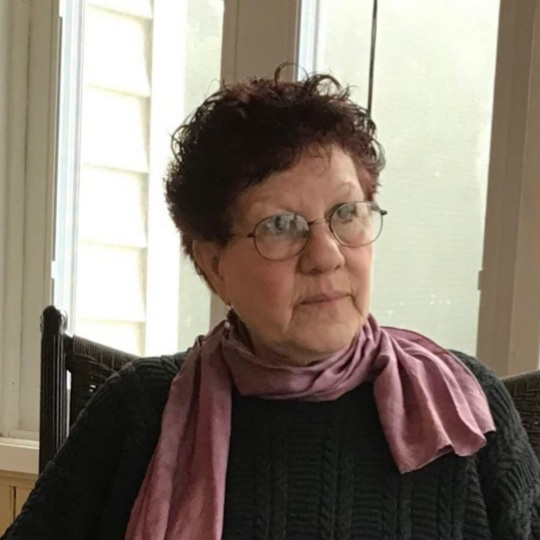
Helena Clare Pittman, one of the Center’s most dedicated teachers, has written, painted, and taught her entire life. In her monthly Helena Writes series, she shares a lifetime of wisdom, one pearl at a time.
In her ninth post, Helena shares on the process of publishing her Gerald Jinks series and explores how memory images make their way onto our pages. Enjoy!
Outside my winter window
I think the eyes open when one writes, just as they do when one paints, to a more subtle, finely-tuned world.
I’ve just looked up from my notebook. The snow on the hemlock trees past my window makes a fine, latticework pattern. I didn’t see that before I started this writing. It’s a glimpse, a vision of bright order. Outer to inner eyes. I think I’ve gasped. Cezanne saw it in his woods, not snow, but the order in the leaves and branches.
Deer look like cave silhouettes today, moving slowly, deep in my white woods. They look like a shadow play. They’re foraging, pawing at the ice crust, probably three suburban blocks in distance from my studio windows. I can’t take my eyes off them.
People are saying that the spring will be early, but the deer’s winter coats are dark this year. Raw umber, almost black, the color I use as a ground when I begin a painting.
The fresh snowfall looks like a stage set.
Yesterday, the sun shone. We pushed ahead the clocks. My cell phone knew. How does that happen? I find it disquieting, though convenient. “We push the clocks ahead tonight—” It’s my father speaking, 70, 60, 50 years ago. Sealed in amber. His voice is steadying,
Instant spring and summer, yesterday. People were out in the town, 12 minutes away. A town of empty stores and Saturday church sales, and the small, family immigrant groceries and restaurants. New growth after the devastation of the Sixties—untimely and unnatural passing of the trains. Closing of hotels. Air travel, air conditioning. Mel Brooks, Woody Allen, Sid Caesar, Sinatra, Bennett, they all began here. Boxers trained at Grossinger’s, at the end of my road. Sonny Liston, Muhammad Ali, Floyd Patterson, right here.
I grew up in Sullivan County, in summers, with my sister and cousins. It was the center of the universe.
But the tide went out, leaving just remnants on the shore. A shoe, an old, broken wooden box. There are gangs in this town now, drugs, the same as in all the small towns out of time in this country. Shadow play. And light. People of hope, drawn to pull up the young people in the town, their families. There are good people everywhere. I know some of them here. They lift me too.
I feel blessed and happy in my woods. Not anxious for spring. Content, still. Before the sun and grass and weeds get me going. The clock in the studio still reads 11:30. I’ll have to turn the hands ahead.
I’m here, left on the shore, too. Soon the red newts will show themselves. I’ll smell witch hazel after the rain, and the good, acrid fragrance of the hemlocks, the tannin in their bark. This is the landscape I experienced in crowds of children, fellow campers. Loudspeakers announcing phone calls and campers by name, eight week a summer. The sky filled with stars. I was 12 years old when I last went to camp here, just up the hill, northwest on Route 17.
Like a film that goes from a crowded scene to a lone figure. Or a photo shopped image. One person alone in the same landscape that held bustles, crowds of people. I am here, elated, content. Yet suspended between two times.
The Gerald Jinks Series
After the collapse of Caedmon, my agent and I approached Carolrhoda Books with Gerald-Not-Practical, the book that Caedmon would have published next, after Martha and the Nightbird. Carolrhoda was part of the new wave of picture book publishers, an imprint of Lerner Publications. Lerner, a small, family-held business in Minnesota, had established itself publishing for the school market. The editors there had acquired one of my stories, The Gift of the Willows, my third book, unagented. Gift was doing well for the standard of the time. It had been well reviewed, and won several awards. One was for design. But I was proudest of its “Children’s Choice Book” listing because the many rejections I’d gotten before the book was acquired commonly said it was “…not a book for children. Too sophisticated…” It was long for a picture book, but I believed in it and just kept sending it out. I could see the illustrations, which I eventually did in watercolor. There were two publishers, in the end, who were interested in Gift; Carolrhoda offered the better contract.
Lerner/Carolrhoda was to stay in picture books for 10 or so years. They published 10 of my picture books before corporatizing, becoming the Lerner Group. Picture books just didn’t sell enough to warrant the investment of time and money they need to thrive.
But at that glorious moment, when the market was shining, my agent created a four-book contract of Gerald-Not-Practical. It grew to be the Gerald Jinks Series. I reshaped another story I’d written into A Dinosaur for Gerald. I wrote Counting Jennie; Jennie became Jennie Jinks. And then came One Quiet Morning, a book I struggled to make work; but it never quite did. I think it’s one of those books that winds up in the market place and one wonders why. An author under pressure—too much pressure to produce anything of value.
But I confess I am happy with the other three. And those three were well reviewed. I will not talk about the reviews of the last, though I am sure you can find them online. The illustrations for Jennie Jinks are probably the pictures I am most proud of—friezes of people and things Jennie Jinks keeps count of in her head. Friezes are my thing—from Ancient Greek art to parades. The mural I painted for the library is essentially a frieze. My still-life paintings are friezes of things.
Uncle Phil’s Diner, a Smithsonian Book, was lost to corporatization. Books used to be backlisted—listed in catalogues, warehoused, and marketed for years. A title might have taken four or five or six years to achieve sales. Books were hand-sold, to and in bookstores. Titles were cherished. The life of a book could take years to play out.
And it’s starting again! Small bookstores are opening. People are publishing their own books. Hand-selling them. Small presses are springing up. There is the internet to talk directly to parents and their children, to fellow writers, and to a public that is still looking for good books—new growth after one world passes. That is the pattern—creating the world again. And we who write are part of it.
On writing/stepping in, method acting
A draft of a story is a miracle. I say that fairly often. An entity has been born, something to be worked with, to bring to life, to pare back, and to elaborate from. A beginning, a middle, and an end. That’s all I need to work.
But let’s not limit it even with that structure. Maybe all I’ve got is something I’ve written through, the structure yet to show itself.
This sentence has appeared in a story that came to me as I taught a class—quite a good story; all the bones were there: “My brother….knew how to tie a proper knot quickly.” The main character wants to learn. Her brother won’t teach her. Here are my suggestions to my student:
Open up the scene: “My brother picked up the rope. ‘You’re in my way,’ he told me. I moved a few feet back and sat down on my stool. My brother held the bulk of rope skein in his left hand. I watched how he found the end with his right hand. He pulled at it, then wrapped it twice around itself. He held up the loop, looked at me over his shoulder and smiled. He knew that I wanted to learn, but his back was to me. Still, I’d caught a glimpse, seen the way he’d done it.
Our mother is setting out our dinner plates, on the table bolted to the deck. She looks at me and smiles. ‘Keep practicing, honey,’ she tells me. ‘You’ll get it!’
After dinner I try it. The skein is heavy and I dropped it. I picked it up, find the end, wrap it twice, then lose hold. I try again. My small fingers fumble. Is it three times? Four? I can’t remember.”
One can enter a scene, even a scene one hasn’t lived. I’ve never lived on a boat, as the writer of this story has. That may make it easier for me to step into its bare bones and improvise. But that is entirely possible with a memory that seems just a flash. I do it with my own sharp memory images when I write, and it amazes me that a truth, meaning, that my small flash holds is revealed. That is the great value of the memory images we carry with us. Improvisation taps into our story-telling skills. We all have that capacity, the mix of experience, memory, deduction, common sense, and a visual sense that lets a scene unfold inside us as we write. Think of telling a joke, a story to a friend on the telephone. Memory is just a glimpse, a shred. A storyteller can weave it into action, can sequence it. Can conjure the senses, sights, smell, touch, sound, taste. Can imagine dialogue, internal dialogue or reflection—is it three times, four? A language of feeling is suddenly on the page, feeling that may have been stored for 50 years or more.
Writing, scene-making, is akin to method acting. Stepping into a deep world where lives the capacity to see, hear, imagine things we don’t know we know. Feeling that has waited for us to tap, to process, to understand, to bring forward into time, to make ourselves whole. We may be writing memoir, fiction, children’s or adult stories—the process is the same. Truth will make itself known to us, by stepping into the draft we have been so fortunate to have pushed out onto the page.
What do you think of Helena’s comparison of writing to method acting? Did that resonate for you? Share with us in the comments!
Related reading: Read the previous Helena Writes posts
Want to receive tips and inspiration like this in your inbox every Sunday morning? Join our email list community! You will receive weekly advice, a year’s worth of weekly writing prompts as a FREE download, and be eligible to participate in our monthly photo prompt contest for a chance to share an original piece of writing with our community of over 1,100 subscribers!
